Before Company One Theater got its hands on the BIPOC-led stage gem “Hoops,” it began as a photography exhibition by Wisconsin-born photographer Nicole Acosta in 2019. As a member of the Art Collective LUNA (Latinas Unidas en las Artes), she produced a gallery with photographs of over 100 individuals nationwide and their stories answering the question; “What do hoop earrings mean to you?”
The Hoops Project was curated for the stage by playwright Eliana Pipes, dramaturg Afrikah Selah, and Emerson alumnae and directing team Tanasia Jones ‘15, Lois Roach ‘83, and Kimstelle Merisma ‘24.
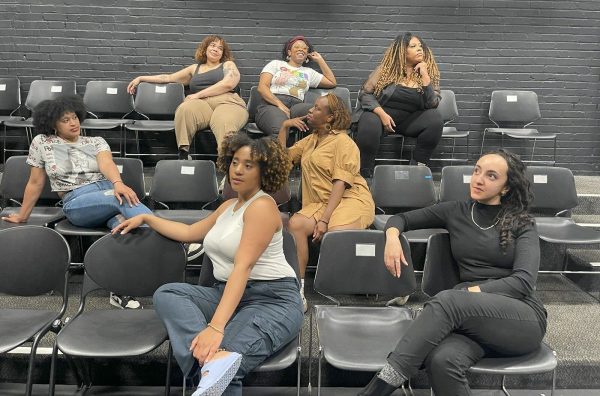
Amongst the collective of talented stage artists, The Beacon interviewed Elijah Brown — a New York State native from the Hudson Valley region.
This interview has been edited for length and clarity.
Why theater?
Theater and I had a long road apart. I was originally going to go to college for sports — sports and cooking. During my senior year, on a whim, I decided to audition for my high school play. I got the lead — which was crazy. I played Dolly in our stage play “The Matchmaker,” the play that was adapted into the musical “Hello, Dolly!”
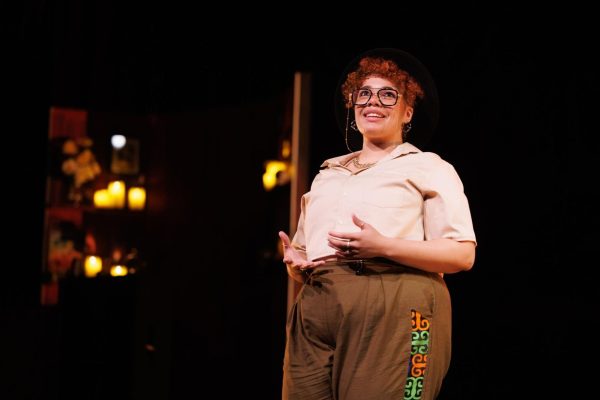
It was after that very first show, that made me feel like I can do this for a while. It was a rush job to get into college, because it was my senior year in high school and I applied to multiple schools in New York and Boston. I did get into most schools for musical theater because I really wanted to sing too, but getting accepted into Emerson seemed like a sign of which direction to go.
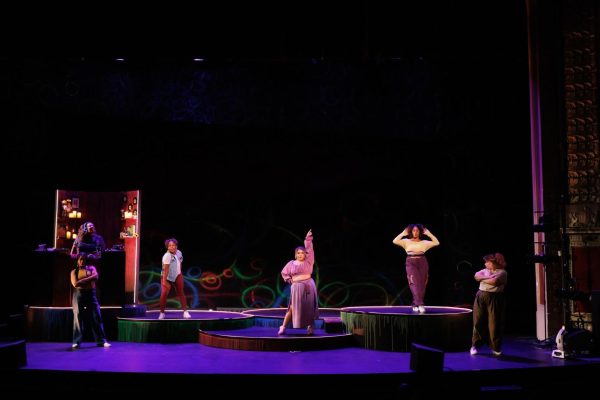
I think of theater as having many transcultural forms. How does it relate to your culture?
I grew up in rural New York with a white mother, and a Black father who is not in the picture. I leaned into my culture as a Black person when I started college. I was still learning, and trying to navigate my queer identity with my Black identity. The only place I really connected to those parts of me was in theater; that was where friends and professionals I related to the most, connected with me.
Did you find “Hoops” or did “Hoops” find you? Was it a general curiosity that drew you to the project or does it resonate with you?
I would say “Hoops” found me. I would always put on hoops as a kid. There’s one picture of my mom at prom with these big silver hoops, and I was like, “That’s what dressing up looks like.” Every time I dressed up, it was always with hoops. My mother had these sort of crescent moon-shaped ones that she never took off.
Being in this show highlighted how hoops can come in many subtle looks, not just the door knockers, and the big extravagant kinds we associate with hoops. There is more than one kind of hoops that shine and deserve appreciation.
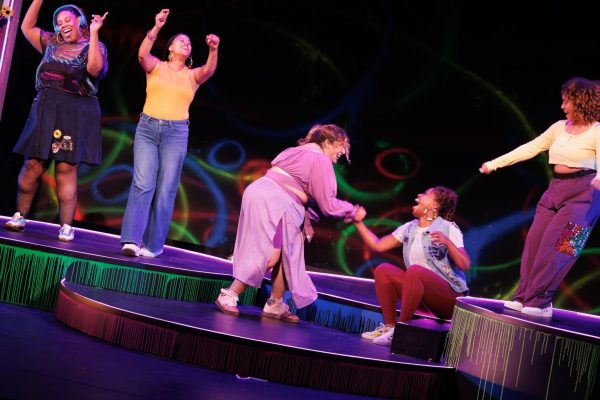
How did you become a movement captain for the show? Is it something you’d want to focus on or is there another behind-the-scenes role you are dying to do?
I would definitely like to continue this role for future shows. Tonasia and I worked together at Emerson, and I coordinated the intimacy and fight scenes for the shows we were on. Tonasia assigned me as a movement captain and I really enjoyed it. Movement, for me, comes from the inner source of your body.
I also minored in dance, and there were a lot of techniques that I didn’t like doing very much. I don’t have a conventional body type; the thin ballerinas and hip-hop dancers looked differently and I wanted to look that way. So, when I’m coordinating or choreographing, I like to find what is most comfortable for the actor’s body. Everyone is not going to look the same when they dance, move or fight. I love using their character and their mannerisms for their scripted movements. Jenny is the choreographer for this show, and it has just been amazing working with her.
What is your favorite style of dance?
My favorite style of dance is jazz, specifically fosse. It’s really intense on the precision of what you are doing. I like to think of what that would look like on a fat body or someone in a wheelchair. It just looks so cool with its dark edge to it. I just love it.
What does theater look like for you in the years to come?
I’ve been on this streak of doing new works, and I have been loving the process of building a new show. I tend to refer to people who’ve done a role before me, but with new works, there’s nothing to go off of. I get to build and originate a character myself that others could one day emulate. I also like that I get to apply some input on how the show is going, with a taste of everything it takes to put together a show.
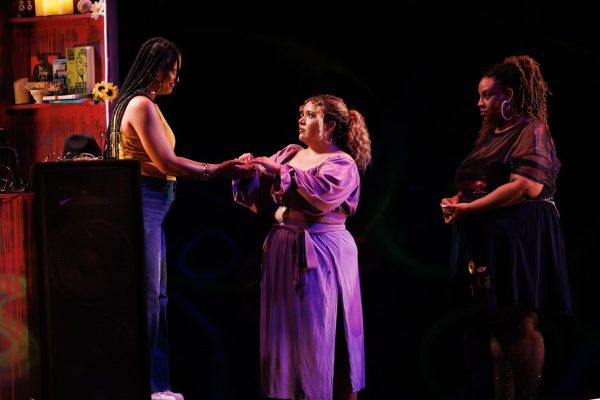
Hoops and its variants are a motif of ornamentation for many cultural histories. I see them as well-rounded in their value to others, while representing a reputedly beautiful piece of culture.
What do hoops mean to you, and why do hoops matter?
I feel like hoops are a statement. When you see someone wearing them, and you have them as well, there’s a subconscious nod exchanged, like “I see you.” They give me confidence to rest my shoulders back with my head high, especially when being catcalled while walking the streets of New York City or Boston. They can feel like armor. You feel them touching and kissing your face, while they compel you to keep your chin high. I feel safer when walking down the street, because they remind me of my confidence.
And they are important because while doing this show, I learned about “The Hoops Project” that had these huge stories with very heavy topics that correlated to this one piece of jewelry. They are connected to so many people. We saw the photographs from the exhibition, and they differed in every which way. It was amazing.
“Hoops” premiered on July 13, and “pay-what-you-want” tickets are now available until Aug. 10.
![]()